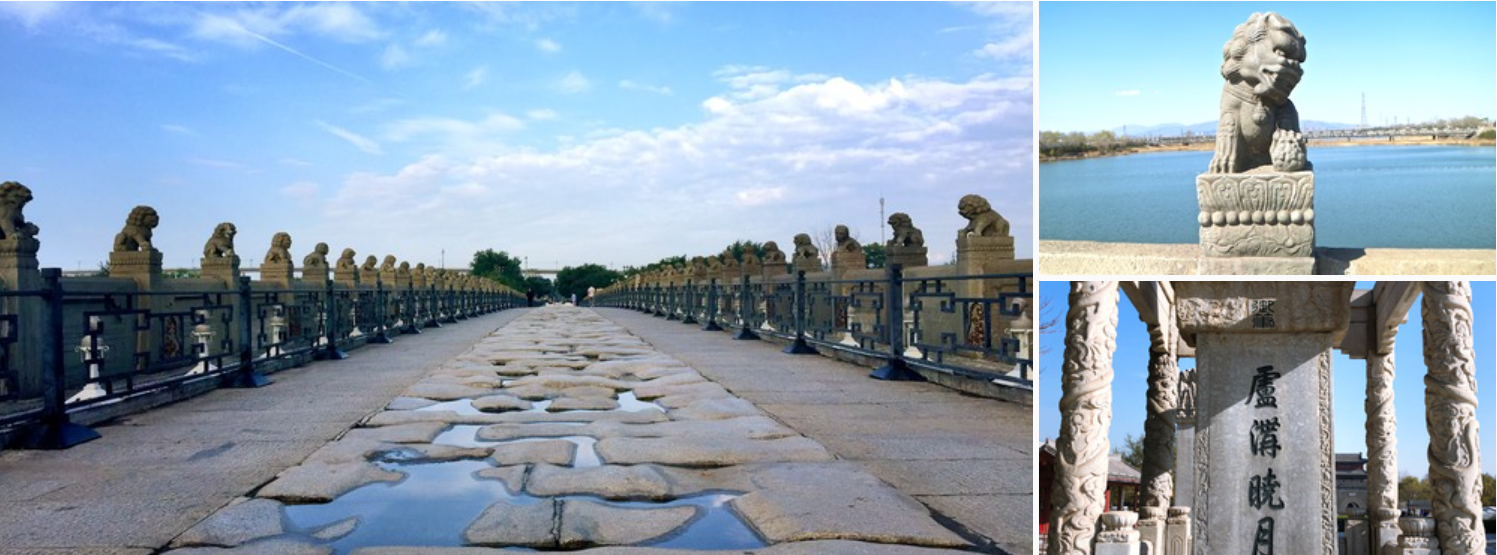Marco Polo Bridge
Historical Background and Significance
The Lugou Bridge is located on the Yongding River in Fengtai District, Beijing. Its construction began in the 29th year of Dading in the Jin Dynasty (1189) and was completed in the 3rd year of Mingchang (1192). It is the oldest existing stone multi-arch bridge in Beijing. It is not only a bridge on a major traffic artery but also an important witness to modern Chinese history. On July 7, 1937, the Japanese army launched the Marco Polo Bridge Incident (July 7th Incident) here, which marked the beginning of the all-round Japanese invasion of China. Since then, the Chinese people have waged an arduous eight-year War of Resistance against Japanese Aggression. Therefore, this bridge also bears profound national emotions and historical memories.
Architectural Features and Craftsmanship
The Lugou Bridge is 266.5 meters long and 7.5 meters wide. The bridge body consists of 11 semi-circular stone arches. The arches are connected and span across the Yongding River like a long rainbow lying on the waves. There are stone railings on both sides of the bridge. The balustrade panels are carved with exquisite patterns and numerous stone lions in various postures. These stone lions are a major feature of the Lugou Bridge. They are either crouching, lying, playing, or angry, with vivid expressions and lifelike appearances. According to statistics, the total number of stone lions is as many as 485, and each one is unique, making people marvel at the superb skills of ancient craftsmen. The construction craftsmanship of the bridge is extremely exquisite. The stone blocks are closely joined together and remain as solid as ever after hundreds of years of wind and rain, fully demonstrating the remarkable achievements of ancient Chinese bridge architecture.

Surrounding Landscapes and Tourist Experience
The surrounding scenery of the Lugou Bridge is beautiful. The Yongding River flows slowly, and the banks are lined with green trees. Near the bridgehead, there is the Wanping City, an ancient city from the Ming and Qing dynasties. The city walls are relatively well-preserved. There are some ancient buildings and memorial halls inside the city, where one can gain an in-depth understanding of the features of that historical period. Tourists strolling on the Lugou Bridge can not only appreciate the unique charm of the ancient bridge and feel the vicissitudes of history but also overlook the natural scenery on both sides of the Yongding River and experience an atmosphere where tranquility and solemnity coexist. Moreover, the Lugou Bridge at night has a special charm under the illumination of lights. The outlines of the bridge body and the stone lions are faintly visible in the lights, as if telling the stories of the past.
Cultural Inheritance and Protection
To protect the Lugou Bridge, this precious historical and cultural heritage, relevant departments have taken a series of measures. Regular inspections and maintenance are carried out on the bridge body to ensure its structural safety. At the same time, cultural publicity activities are carried out in the surrounding areas to popularize the historical and cultural knowledge of the Lugou Bridge among the public, so that more people can understand its significance and inherit and carry forward this precious national memory.
TAG:
